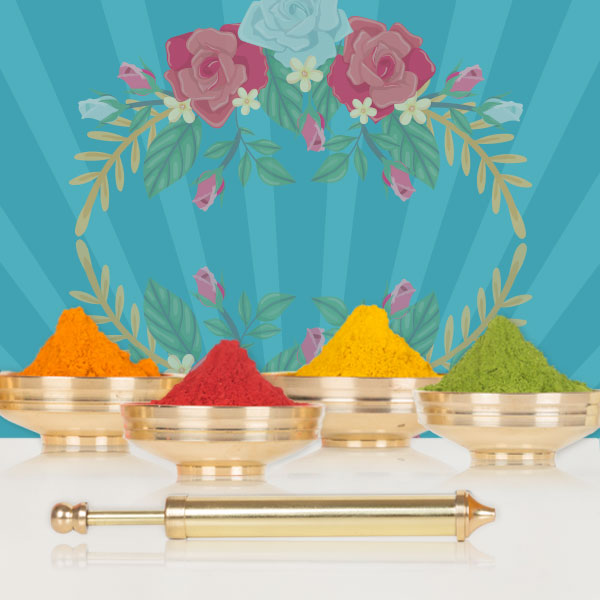Holi is the mood-uplifting festival of colours that, marks the onset of Springtime in India. As per the Hindu calendar, it falls in the lunar month of Phalguna. In 2018, Holi arrives on the 2nd of March.
Holi begins the night before, with Holika Dahan(‘Death of Holika’) and the ceremonial burning of effigies, symbolic of demoness Holika. To avenge his brother’s death at the hands of Lord Vishnu, Hiranyakashipu sought dominion over the world with tyrannical ambition. His son Prahlad’s ardent devotion to Vishnu, was the proverbial spoke in the wheel. Hiranyakashipu asked his sister Holika, who had the gift of being impervious to fire, to enter a burning pyre with her nephew on her lap. Vishnu saved Prahlad, and Holika paid with her life. To this day, Holi remains a celebratory expression of the triumph of good over evil.
The surprise onslaughts of colour, water from pichkaris (Indian water guns), and water-filled balloons, with a “bura mat maano, Holi hai” (“do not take offence, it is but Holi”) mimics the playful gaiety with which a mischievous young Krishna would tease gopis (milkmaids) of Gokul and Vrindavan. Krishna is also the eighth avatar of Lord Vishnu. The platonic frolicking of childhood took on a deeper ‘colour’, with the legendary love story of Krishna and his consort Radha.
THE STORY OF TRADITIONAL GULAL, OR COLOURED POWDER

Gulal was once made with a mixture of protective Turmeric paste, and crushed flowers. Many of the synthetic colours in use today, can cause alarming allergic reactions on skin and hair, even when mixed in water. In a country teeming with colourful flowers and aromatic spices, it is time we stopped and thought about why we have not fervently carried forward this tradition.
The four main colours of Holi have profound significance. Dark Indigo stands for the skin of Krishna, ‘The Dark One’. Yellow is a tribute to the description of Vishnu as Tantuvardhan, (weaver) for he is believed to have woven the sun’s rays into a garment for himself. Red is for love and fertility, and green is for the promise of new beginnings. Historically, Indian Madder (Manjishtha) has been used for reddish pigments; besides Indigo for blue and Turmeric for yellow. Green would be made by mixing Indigo, with either Turmeric or Pomegranate peel, which yields a vibrant yellow itself.
TRADITIONAL HOLI GAMES

Today’s water guns simply do not match up to Krishna’s endearing bamboo squirter! The bamboo evolved into a brass version, extensively popularised during the Mughal era. Brass is a prehistoric, metaphysically healing metal. It stands for the need to clear away spiritual debris and physical toxins, and for connecting with all that is inherently good and pure in the Universe.
In parts of North and Western India, human pyramids are formed to reach a pot of buttermilk or curd strung at a formidable height, with the aim of victoriously smashing it. This is a tip of the hat to Krishna’s penchant for stealing butter. Bengal celebrates Holi with Dol Yatra (‘Swing Festival’). Women dance, and sing devotional songs, taking turns at pushing swings on which are perched idols of Radha and Krishna. In Manipur, the Yaosang festival and Holi blended together with the 18thcentury introduction of Vaishnavism. The 6-day celebration begins on the full moon night of Phalguna, resonating with the sound of folk music, to the beat of traditional drums.
Regardless of medium and manifestation, let us remember that, with the incarnation of Vishnu the Preserver taking centre stage on Holi, the festival is about optimism and anticipation. For as long as purity and kindness prevails, ‘all the world’s a stage’ for unity, camaraderie, and a fresh start.
